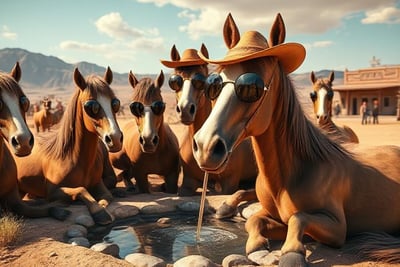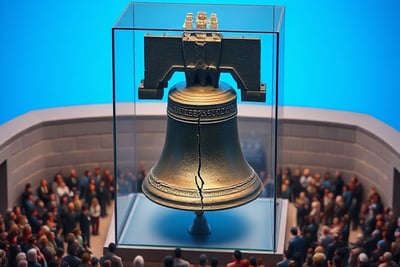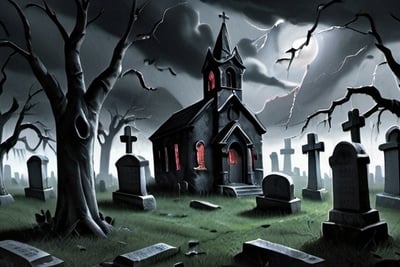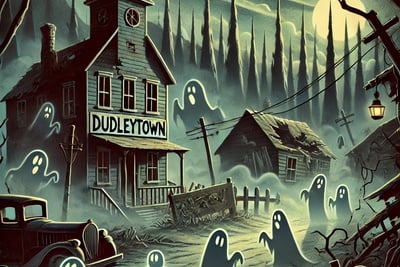The Remarkable Tale of the Navajo Code Talkers in WWII
The Navajo Code Talkers were unsung heroes during World War II, using their native language to create an unbreakable code that helped the U.S. military win crucial battles. This blog explores their remarkable story, their courage, and the lasting impact of their work during the war.
DipVai
1/30/20255 min read
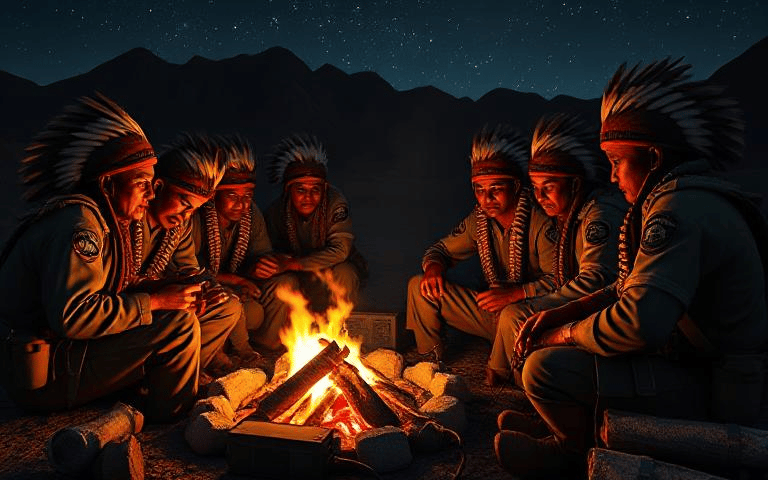

World War II was a time of unprecedented global conflict, and every nation involved had to find new and innovative ways to gain an edge over their enemies. For the United States, one of the most valuable secrets of the war was the use of an unbreakable code created by a group of Native American soldiers. These soldiers, known as the Navajo Code Talkers, played a pivotal role in securing victory for the Allies, and their remarkable story is one of bravery, ingenuity, and cultural pride.
The Birth of the Navajo Code
In 1942, during the early days of World War II, the U.S. military faced a significant challenge: enemy forces were intercepting and decoding American messages with alarming ease. To combat this, the military needed a new, unbreakable code—one that would be impossible for the Axis powers to crack. The solution came from an unlikely source: the Navajo language.
The Navajo language was spoken by a relatively small group of people, making it difficult for enemy forces to decipher. It was a complex, tonal language with unique grammatical structures that made it nearly impossible to understand without extensive training. Recognizing the potential of the Navajo language, the U.S. Marine Corps sought out Navajo speakers who could use their language to create a code that would remain unbreakable.
The Recruitment of the Navajo Code Talkers
In 1942, the Marine Corps recruited 29 Navajo men to serve as code talkers. These men, many of whom were young and had never left their Native American communities, quickly became an essential part of the military’s communication efforts. Their task was to develop a code using the Navajo language that could be used to send secure messages in the heat of battle.
The process of creating the code was a collaborative effort. Each letter of the alphabet was assigned a word from the Navajo language that was easy to remember but hard to decipher. For example, the letter "A" became "ant," "B" became "bear," and "C" became "cat." These simple associations allowed messages to be transmitted quickly and without the risk of being intercepted or understood by enemy forces.
In addition to the alphabet, more complex phrases and military terms were assigned to specific Navajo words. For example, the word for "submarine" was "shark," and "fighter plane" was translated as "chicken hawk." The code was so effective because the Navajo language itself was difficult to understand, and the code created from it was even harder to decipher.
The Role of the Code Talkers in WWII
The Navajo Code Talkers played a critical role in several major battles during World War II, including the Battle of Iwo Jima, the Battle of Okinawa, and the Battle of Saipan. Their ability to send and receive encrypted messages in the heat of battle was crucial to the success of American operations in the Pacific Theater.
One of the most famous examples of their work came during the Battle of Iwo Jima in 1945. For nearly a month, American forces battled Japanese troops for control of the island. During this time, the Navajo Code Talkers transmitted thousands of messages, ensuring that American forces could communicate securely and effectively without the fear of their messages being intercepted. Their efforts contributed significantly to the success of the battle and the eventual capture of the island.
The Code Talkers' work was not limited to the Pacific Theater. They also played a vital role in the European Theater, where their code was used to secure communications in critical battles. Despite the immense pressure and danger they faced, the Navajo Code Talkers remained steadfast in their commitment to their country and their mission.
Fun Facts About the Navajo Code Talkers
The Code was Never Broken: Despite the efforts of Japanese cryptographers, the Navajo code was never successfully deciphered. It remains one of the most successful military codes in history.
Many Code Talkers Were Young: The original 29 Navajo Code Talkers were all under the age of 30, with some as young as 17.
A Vital Role in the Pacific: Over 400 Navajo Code Talkers served during World War II, and they were instrumental in securing victories in battles like Iwo Jima, Saipan, and Okinawa.
Recognition Was Delayed: Due to the secrecy of their work, the Code Talkers did not receive public recognition for their contributions until many years after the war. Their service was kept classified until 1968.
The Legacy of the Navajo Code Talkers
For many years, the story of the Navajo Code Talkers remained a closely guarded secret. During the war, their efforts were kept classified, and they did not receive widespread recognition for their contributions. It wasn’t until 1968 that the U.S. government officially acknowledged the importance of their work when the Code Talkers were declassified.
In the decades following the war, the Navajo Code Talkers became celebrated heroes. In 2001, President George W. Bush awarded the Congressional Gold Medal to the original 29 Navajo Code Talkers, and in 2008, they were awarded the Congressional Silver Medal for their bravery and service. The contributions of the Code Talkers have also been commemorated in numerous books, documentaries, and films, ensuring that their legacy will never be forgotten.
Today, the Navajo Code Talkers are remembered as a symbol of cultural pride and resilience. They proved that the strength of a nation lies not only in its military might but also in the rich diversity of its people. Their story is a testament to the power of language, the importance of tradition, and the courage of those who serve their country.
Latest in Paranormal
The Restless Souls of Stull Cemetery: Is It Really a Gateway to Hell?
Get in touch
itsusdipvai@gmail.com

